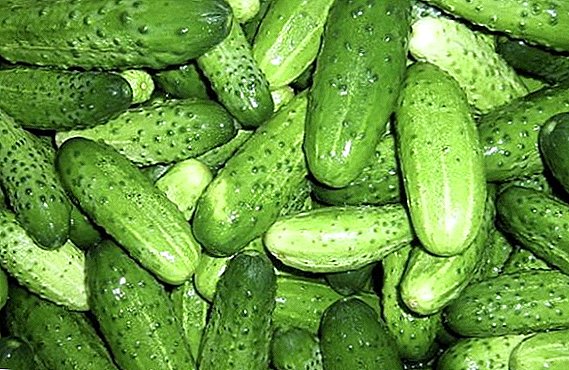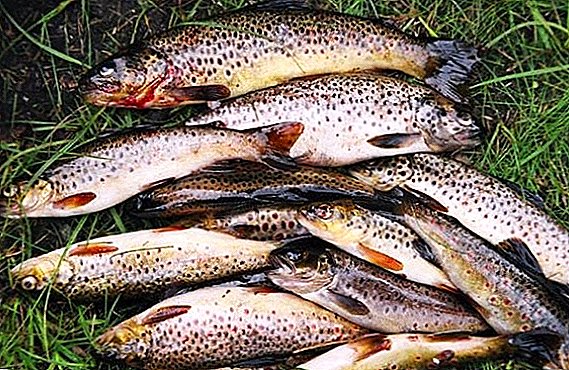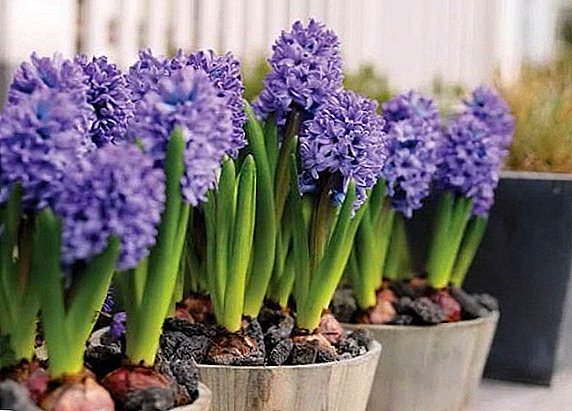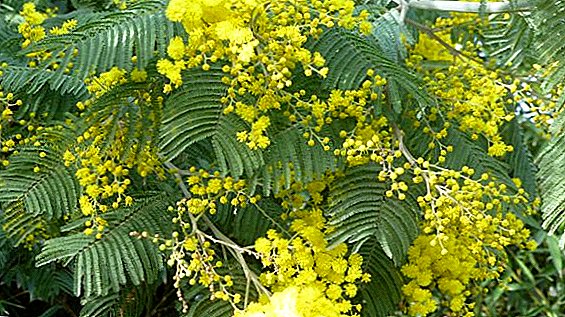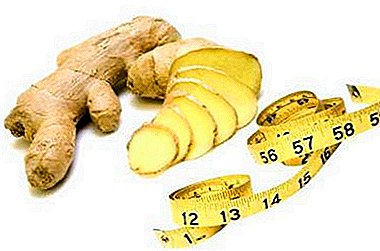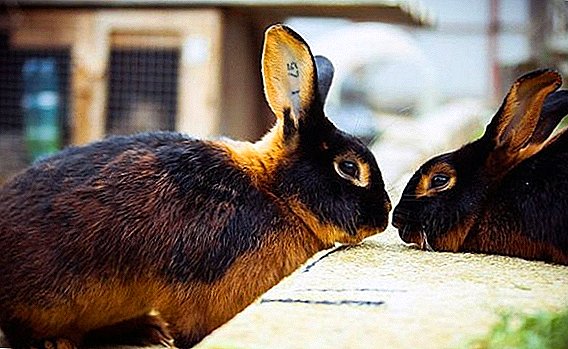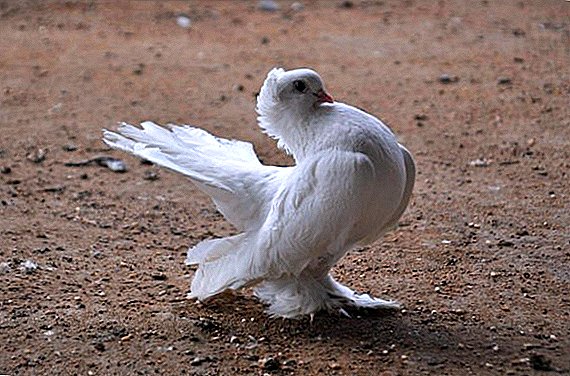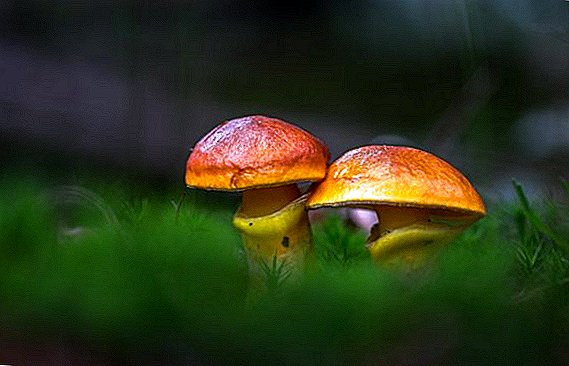
Due to its beautiful appearance, as well as ease of maintenance and simplicity, gloxinia is very popular among gardeners. This decorative culture can be easily grown at home.
Especially distinguished among the wide variety of species and varieties - pink gloxinia, thanks to its brightly colored lush buds. In our article you will learn about the features of growing this flower.
We will tell you how to properly care for and multiply. We also recommend to watch a useful and interesting video about reproduction with the help of a tuber, petals and seeds.
Botanical description and history
Sinningia is beautifully known to amateur flower growers called gloxinia. This is a tropical tuberous plant with bell-shaped, velvety, large, brightly colored flowers. Gloxinia straight stem, fleecy leaves, single flowers.
In nature, this plant can be found in Brazil, America, Mexico. It grows on the rocks by the river, in the tennis forest thickets. Gloxinia grown in greenhouses and at home.
The flower belongs to the family of Gesneriaceae. It was first found in the Brazilian forests in 1785. It is South and Central America that is considered the birthplace of this plant. A scientist at the University of Boston V. Sinning has developed many hybrids of this plant, among which is a very popular gloxinia pink. In honor of this breeder, Gloxinia got its second name - synningia..
Species and their photos
Fairy tale

Gloxinia called pink fairy tale blooms chic large velvet pink flowers. The center of the petals is colored crimson, the neck is light, covered with dark specks.
Extravaganza

Gloxinia variety called extravaganza also has velvet large flowers with bright pink border and specks on the edges of the petals. Peduncles gloxinia extravaganza short, pink-coral shade. As blooming buds increase in size.
Dream

Gloxinia variety pink dream is a miniature flower with bright elegant pink flowers. This flower has an elongated tube and a bright neck. The grade pink dream differs in the long period of blossoming.
Description of appearance and features
Pink Gloxinia is a tuberous plant with beautiful flowers. The thickened stems of gloxinia grow up to 10 cm in height, 4-6 pairs of leaflets with opposite arrangement grow on the plant.
The leaves are oval, wide, heart-shaped at the base, velvety, from 15 to 20 cm long. The veins of the upper part of the sheet are silver, the lower part of the leaf has a reddish tint. Pink gloxinia flowers are bell-shaped, velvety, on long peduncles.
Important: It is easy to grow gloxinia, it is indelible to the soil, it multiplies easily and blooms profusely.
Where and how to plant it: rules and tips, instructions
When purchasing gloxinia tubers, you should pay attention to their size and appearance. They should be solid, 3-4 cm in size, free from mold or rot. At the top of the gloxinia tuber there is a recess where the kidney is located, which looks like a tubercle.
Gloxinia is planted at the time when the tubers wake up after winter dormancy.. This can be seen in the appeared sprouts. Most often this occurs in February or March. Do not wait until the sprout grows large, should be planted slightly sprouted tuber.
If the tuber is slightly damaged, then the place of damage should be cut and sprinkled with charcoal, the cut cut with a mixture of fungicide and root. After this procedure, it should be dried.
Gloxinia planting rules:
 Lay a drainage layer up to 2 cm high at the bottom of the pot. It can be expanded clay or foam plastic. Pour the soil on top without tamping it.
Lay a drainage layer up to 2 cm high at the bottom of the pot. It can be expanded clay or foam plastic. Pour the soil on top without tamping it.- In the center of the pot make a groove in which to lay the tuber and sprinkle it with the soil for 2/3. The soil must be watered, but so that the water does not fall on the shoots and in the center of the tuber, otherwise it can lead to decay of the plant.
- To create the necessary microclimate, the pot is covered with polyethylene and placed in a warm, well-lit place - this helps to create a greenhouse effect.
- Every day, the pot is opened for 10-15 minutes to air the plant. After the appearance of the first leaves, the flower is covered only for the night, and after a few days the polyethylene is completely removed.
- As the stem grows, the tuber should be sprinkled with soil 1-2 cm so that it is in the ground and does not spoil.
- At first, water the plant slowly and carefully so that the tuber does not rot.
Lighting and location
Gloxinia loves good and uniform lighting.because it has the peculiarity of reaching for the light. However, direct sunlight can cause a burn on the leaves of the plant, therefore, the light must be diffused. In the spring, gloxinia can stand on the sunny side, but when a hot pore sets in, the plant should be slightly grated.
The best place for pink gloxinia is shelving and artificial lighting. In such conditions gloxinia is protected from drafts and receive the necessary amount of light. Rosettes grow neat and juicy leaves.
Soil requirements
Room gloxinia is not very capricious to the composition of the soil. The substrate for the tubers of pink gloxinia should be light, loose, nutritious, it should absorb moisture well and be air-permeable. For such purposes suitable soil based on peat.
Too dense substrate can retain moisture, and the flower will rot and die. For gloxinia, a soil for flowering plants is suitable, in which you should add a couple of handfuls of sand and two tablespoons of vermiculite per liter of earth mixture. The soil can also be prepared independently. To do this, mix in the proportion of 2/2/1 leaf soil, sand and peat.
Board: Before planting the tubers in the earthen mixture, it must be calcined in the oven or sprayed with the preparation “Maxim” in a proportion of 2 ml per liter of water and allowed to dry.
How to care?
Pink gloxinia non-perennial plant and very grateful. In order for her to feel comfortable it is necessary to follow simple rules:
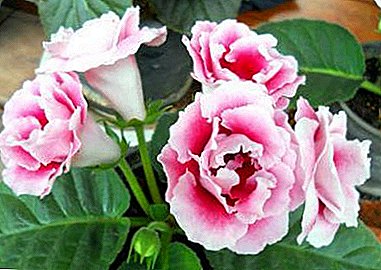 Water with warm settled water.
Water with warm settled water.- In order not to pereuvlazhnit plant and not get water on the leaves and flowers, preferably watered in the pan.
- To provide the necessary air humidity for the gloxinia, the flower pot can be installed in a special tray filled with wet clay.
- During the period of active growth (April-September), the plant must be fed with complex liquid fertilizers.
- When flowering is over, gloxinia is prepared for a rest period. To do this, cut off the ground part of the plant, leaving a stump 2 cm high, and remove the pot in a dark cool place.
- At the end of February, the tubers are transplanted into a new soil, clearing the old soil, cutting off the rotted parts and disinfecting the cuts.
Under favorable conditions, gloxinia can throw up to twenty buds at a time simultaneously.
Common diseases and pests
With the wrong care, gloxinia can get sick or be hit by some pests.
- As a result of watering with cold water, brown spots may appear on the leaves.
- In case of overdose of fertilizers, the leaves may turn yellow from dry or too humid air.
- A sign of the presence of powdery mildew or gray mold can be gray bloom on flowers and leaves.
To save the plant, remove damaged leaves and flowers, make moderate watering, and treat the flower with a fungicide.
If gloxinia does not bloom, then add lighting to it, strengthen fertilizing with a minimum amount of nitrogen.. On the lack of light can speak and elongated pale green leaves.
Among the parasites that infect gloxinia are the pink ones - the scythe, the whitefly, the spider mite, the mealybug.
Breeding features
Pink gloxinia breeds in several ways: tubers, leaf cuttings and seeds. Consider them.
Tubers
For division, a very overgrown tuber is taken. With a sharp knife, it is cut into pieces so that each has a sprout. Place the slice sprinkled with activated charcoal.
Parts of the tuber are planted in separate pots with wet soil. The first 2-3 days after planting the substrate is not moistened.
Watch the video about gloxinia tuber division:
Leaf cuttings
During reproduction, a young healthy leaf with a part of the cutting 1 cm long is cut from a flowering plant from a flowering plant. The cutting rooted in a mixture of sand and peat in the proportion 4 / 0.5 Cover the cutting with a glass jar and maintain the temperature at 22-24 degrees.
Young nodules appear after 20 days. After that, the cuttings can be planted in separate containers.
Watch the video on the propagation of gloxinia using leaves:
Seeds
 Gloxinia need to be sown in November-February in a wide low capacity, filled with a substrate of equal parts of peat soil, leaf soil and sand. Sow seeds sparsely and shallowly, lightly sprinkled with earth.
Gloxinia need to be sown in November-February in a wide low capacity, filled with a substrate of equal parts of peat soil, leaf soil and sand. Sow seeds sparsely and shallowly, lightly sprinkled with earth.
Capacity is placed on a bright place, where the temperature is maintained at 25 degrees. Periodically, the soil should be sprayed with warm water. Gloxinia starts to emerge in 12-14 days.
Planted plants when they form two leaves, at a distance of 2 cm from one another. In different pots, plants are planted when they begin to touch each other with leaves.
Watch a video on breeding Gloxinia seeds:
- How at home to properly breed hybrid gloxinia?
- Terry gloxinia Esenia: description of the flower and the care it needs.
- How at home to care for Rosalind gloxinia and multiply it?
- White terry gloxinia is a beautiful and delicate flower in your home.
- Description of the Brocade Gloxinia, tips on planting and breeding a flower.
- How to grow a decorative Gloxinia Sonata at home?
- Detailed description and characteristics of Gloxinia varieties Kaiser Wilhelm and Friedrich.
- Description and features of growing varieties of Krasnoyarsk and Red Riding Hood.
- One of the most beautiful varieties is Shagane gloxinia.
Conclusion
Properly caring for the gloxinia, you can get a beautiful and grateful plant that will please the entire active period with its chic and spectacular flowers. The one who once saw blooming Gloxinia will forever remain her fan.


 Lay a drainage layer up to 2 cm high at the bottom of the pot. It can be expanded clay or foam plastic. Pour the soil on top without tamping it.
Lay a drainage layer up to 2 cm high at the bottom of the pot. It can be expanded clay or foam plastic. Pour the soil on top without tamping it. Water with warm settled water.
Water with warm settled water.